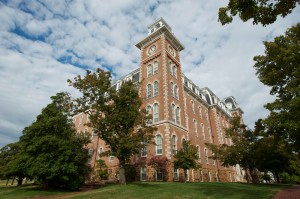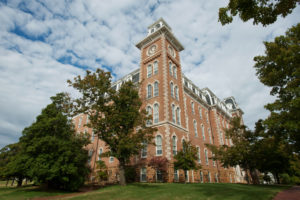The U.S. could be left in the dust if it doesn’t respond and adapt
 Partnerships between universities and corporations are nothing new: IBM has been teaming up with universities since the the early days of computer science education in the 1940’s.
Partnerships between universities and corporations are nothing new: IBM has been teaming up with universities since the the early days of computer science education in the 1940’s.
As the debate over the “skills gap” accelerates, however, collaborations between universities and businesses are becoming more sophisticated and intertwined, evolving to meet shifting economic, marketplace and educational needs.
For example, now IBM University Programs (IBM UP) partners with 28 business schools and universities to craft curricula in the emerging field of big data analysis.
As James Spohrer, director of IBM UP says, the lag time between new initiatives is getting more compressed, and “every decade is punctuated by some major initiative and more recently, it’s been every couple of years that we’ve had a new one.”
And corporations may sense a greater urgency to align with universities to have access to the skilled workforce they need in the future. A recent Northeastern University poll found that 73 percent of business leaders contend there is a substantial skills gap in the current U.S. workforce. Even more damning, 87 percent of those leaders say most college graduates lack the most important skills required to succeed into today’s workplace.
Naturally, it is never easy to align the interests of universities and local industry, but the next generation of the partnerships reveal several interesting trends in how to navigate the fraught territory between promoting academic freedom and training a highly-skilled workforce.
(Next page: Trends 1-3)
1. More than social responsibility and feel-good moments
At one time, business-university partnerships typically entailed a corporate representative sitting on a university advisory board or the company simply writing a check to the higher ed institution. Such collaborations were done more to enhance the corporation’s brand or out of a sense of social responsibility, says Jason Tyszko, senior director of policy for the U.S. Chamber of Commerce Foundation’s Center for Education and Workforce.
Today, corporations want more than just a feel-good moment when they work with a university. They want a demonstrated return on investment for their outlay to the university. That means they are more engaged in the shaping of curriculum and identifying the required skills sets for a particular industry.
Having industry represented at the instructional level means the curriculum can adapt more quickly to changing marketplace needs. “So students don’t come out saying, I have a skill set that was competitive five years ago but has no place in today’s economy,” Tyszko says. “Faculty and deans need to know how to constructively engage employers to get that feedback in real time.”
2. A syndicate model
Elaine C. Rideout co-authored a recent book, InnovationU 2.0: Reinventing University Roles in a Knowledge Economy with Louis Tornatzky, which profiles 12 universities fostering innovation and economic growth in partnership with industry. She says to win grants from the National Science Foundation or federal agencies, universities are being pressed to cobble together syndicates of partners that include other universities, nonprofits and businesses.
“The funding environments have really helped force the issue,” Rideout explains. “It used to be universities would go solo applying for research funds. Then the feds started encouraging more participatory proposals.”
One of the universities featured in InnovationU 2.0, Clemson University, is a good example of ways in which a state college can meld together public and private funding to build research campuses and support other university programs.
For example, Clemson University, using a mix of state, university and private funds, built a $250 million International Center for Automotive Research in Greenville, S.C. One of the primary backers, along with other automotive-related companies, was BMW.
John Ballato, Clemson’s vice president for economic development, says, “Where we’re building a campus, investing staggering amounts of money, you can’t do that by yourself, nor can the company,” Ballato explains. “BMW has only so much resources. Clemson is a mid-sized university. So the other piece of these public-private partnerships is a governmental source.”
3. Making it meaningful
The Clemson and BMW partnership began almost two decades ago when the auto company located new operations in South Carolina. Ballato admits some stumbling at first when Clemson suggested they partner to build a wind tunnel to test cars. BMW told the university it already had a wind tunnel, and what it really needed was a specialized talent funnel — students with graduate-level training in automotive engineering with an emphasis on integrating the smart systems emerging in the industry.
Two endowed chairs, 23 doctoral degrees and 160 masters degrees later, Ballato says the lesson is that universities can’t assume it knows what a corporation wants: “You put your brain on hold and you sit down and listen. Then you have to make a decision as to whether or not it’s something you can and should do.”
(Trends 4-7)
4. Moving beyond STEM
While most of these partnerships fall within STEM areas, that doesn’t mean they can’t include other disciplines not related to science, engineering or business.
For example, at Clemson, within the Pearce Center for Professional Communication, students are matched with local business that need like white papers and research reports. “Closing the skills gap must occur across disciplines and not just engineering or business,” Ballato says.
“We’re experimenting with ways to get everybody, from English majors to Chemistry majors, engaged with solving real problems with industry and nonprofit partners. This not only should help address the skills gap but also foster creative and interdisciplinary thinking and entrepreneurship.”
5. Promoting entrepreneurship
As the notion of working for one company for one’s entire career is increasingly foreign to today’’s students, Ridout says they are demanding schooling in how to thrive while self-employed.
In addition to exposing entrepreneurship classes to students outside of the business school, she recommends universities continue training after graduation with summer programs or competitions for the best startup business plan.
She describes an “end of the pipeline problem” that hoists students out into the work world less than fully prepared. “That is where these partnerships with economic development initiatives in university towns can make a difference,” Rideout says.
6. Measuring what you manage
Today’s university-business partnerships emphasis measuring and evaluating outcomes, though determining concrete benchmarks is a work in progress.
It goes beyond just counting degrees, explains Tyszko of the Chamber of Commerce. How did that student perform in the workplace? Did the university help the employer reduce its time to fill positions? Did the recent grads function adequately from the first day of employment, or did they require extra training?
Anthony Buccanfuso, executive director of The National Academies’ University Industry Demonstration Partnership (UIDP), says there are no clear-cut metrics to evaluate these collaborations and that any results are “typically not instantaneous.”
Further complicating the matter are the differing perspectives of the two parties involved. “Universities like data that says, hey, we got X millions of dollars a year from companies to perform research or to partner with them,” Buccanfuso says. “But companies are looking at different issues, like students hired. It’s very difficult and it’s also a longer time range, so there isn’t one set of established metrics to evaluate these collaborations.”
7. Shortcut through the maze
Rideout says most universities could do better to live up to the intent of the 1980 Bayh-Dole law compelled them to transfer technological innovation to practical use in the real world.
One way to do this is by shrinking the bureaucracy that can sometimes hinder technology transfer. The University of Minnesota’s Office for Technology Commercialization (OTC) is making strides in that regard. They aid students and researchers in their start-up companies, navigation through the licensing maze, sourcing funds and finding potential partners in the business world. In 2013, Minnesota’s OTC reported 14 companies, 331 invention disclosures and 65 U.S.-issued patents.
Meanwhile, the university’s “Try and Buy” program permits companies to access the university’s licensed technology for a trial period to assess whether any product produced is commercially viable. There’s typically a fee, but Minnesota firms are given free rights for the trial period, according to Rich Huebsch, associate director at Minnesota’s OTC. In addition, the first $1 million of product revenue is royalty-free for the licensing company.
Should universities and industry partner at all?
Some critics throw shade on the concept of university-business partnerships, arguing that it’s not the role of business to meddle in a university’s curriculum, and raising questions about academic independence.
Rideout examines that controversy in the conclusion of her book, and she feels sentiment is swaying more in favor of these partnerships due to the current economic climate.
“Educational institutions have these dueling priorities,” she admits. “You want to prepare young people to have a possibility in the job market. But you want to make sure no one is ever impinging on your freedom to come up with any conclusion and do empirical research that has not been compromised by some political agenda.”
What may be tipping the debate in favor of partnerships, applied research and practical education is the current state of the world economy, which is moving faster than ever. The U.S. could be left in the dust if it doesn’t respond and adapt.
“We’ve lost our blue-collar manufacturing,” she says. “What do we have left? We have innovation, and we have technology. We have inventions. And if we lose that, what do we have?”
Maria Wood is a journalist and writer for over 20 years, Maria Wood has reported on such diverse topics as the nursing profession in the U.S., commercial real estate and local politics in her home state of New Jersey. Follow her on Twitter @mariawood722. A complete version of this excerpted article can be found on SkilledUp’s B2B blog.
- How we connect incoming students to the university resources they need - July 4, 2025
- AI and the workforce: Reskill to meet the moment - July 1, 2025
- Beyond the game: Why business expertise is the future of sports management - June 26, 2025

Comments are closed.